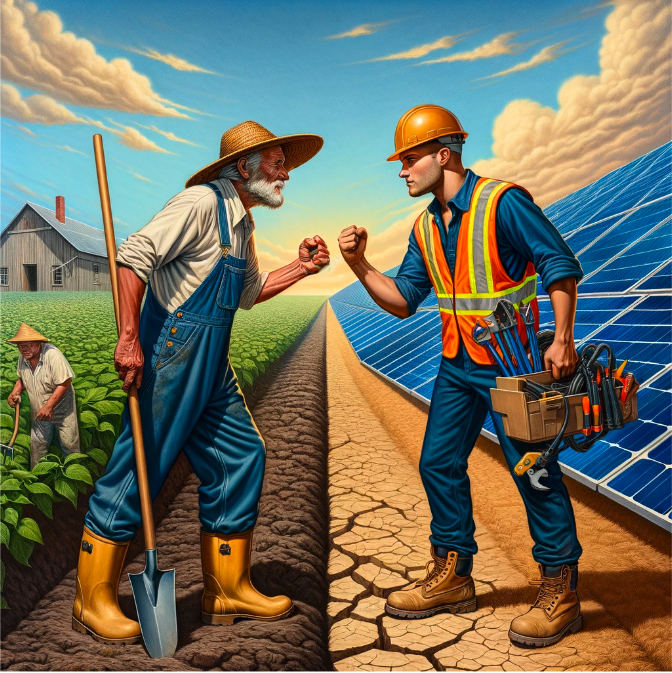
Siting the Needle in a Haystack: Solar Permitting in Glenn County, CA
Sunny California has one of the most ambitious clean energy agendas in the country, aiming to reach 100% renewable energy by 2045 – and solar power is expected to play a leading role. However, when stacking all of the local and state level permitting restrictions for ground-mount solar together on the same map, we noticed a problem: there are shockingly few locations where developers can actually build solar farms.

Layered state and county-level solar restrictions in Glenn, California. Green polygons are where ground-mount solar is allowed.
The map above depicts areas where ground-mount solar farms are allowed (in green) within Glenn County, a community of almost 30,000 people nestled on the northern edge of California’s Central Valley. Community and utility-scale solar projects, which the zoning ordinance regulates as “Power Generation Facilities”, are subject to a thicket of local and state-level restrictions that determine where they can be built and under what conditions. As is common for agricultural communities, many of these restrictions stem from a desire to protect prime farmland and the rural character of the area.
In California, one of the most important pieces of legislation devoted to farmland protection is the California Land Conservation Act, more commonly known as the “Williamson Act”. Originally passed in 1965, the Williamson Act allows farmers to enter into voluntary contracts with municipal or county authorities to restrict development of their farmland in exchange for property tax reductions. Although a state level policy managed by the Department of Conservation, this law delegates primary implementation and interpretation responsibilities to local governments. As it pertains to siting solar projects, this means that the extent of development restrictions surrounding Williamson Act properties – both those under active contracts or within designated agricultural preserves – are left to the discretion of the local communities themselves. Williamson Act areas usually have additional permitting complexity but the extent of this complexity, and whether it kills the viability of proposed solar projects, varies widely.
Notably, Glenn County’s implementation with respect to solar projects is fairly straightforward, albeit prohibitive: all power generation facilities designated as “primary use” are forbidden on Williamson Act land. Since community and utility-scale solar plants usually export 1-5 Megawatt (MW) of power to the grid and require about 6 acres per MW, they are typically deemed the “primary use” of the property they reside on.
Each local government may still go beyond Williamson Act restrictions by protecting other lands considered important to their constituents. In addition to most farmland, the Glenn County ordinance forbids all residential and commercial zones from hosting primary use power generation facilities, leaving only a handful of industrial and agricultural areas available for solar development via successful application for a Conditional Use Permit (CUP).
Thus far this analysis has only considered zoning and permitting restrictions. What about access to grid injection capacity and the buildable acreage of the properties themselves?
Paces identified every property in Glenn County at least 20 acres in size and located within 0.2 miles from a distribution feeder with at least 1 MW of injection capacity as determined by the utility’s hosting capacity map. Then, Paces refined the list by removing parcels with less than 10 acres of continuous flat buildable area and those residing within the county’s two incorporated municipalities, which have independent zoning and permitting regimes.
This left 69 parcels feasible for community solar when considering common buildable area and interconnection criteria. But when adding the zoning and permitting restrictions shown on the map above, only 5 parcels are located on land that allows solar as a primary use.
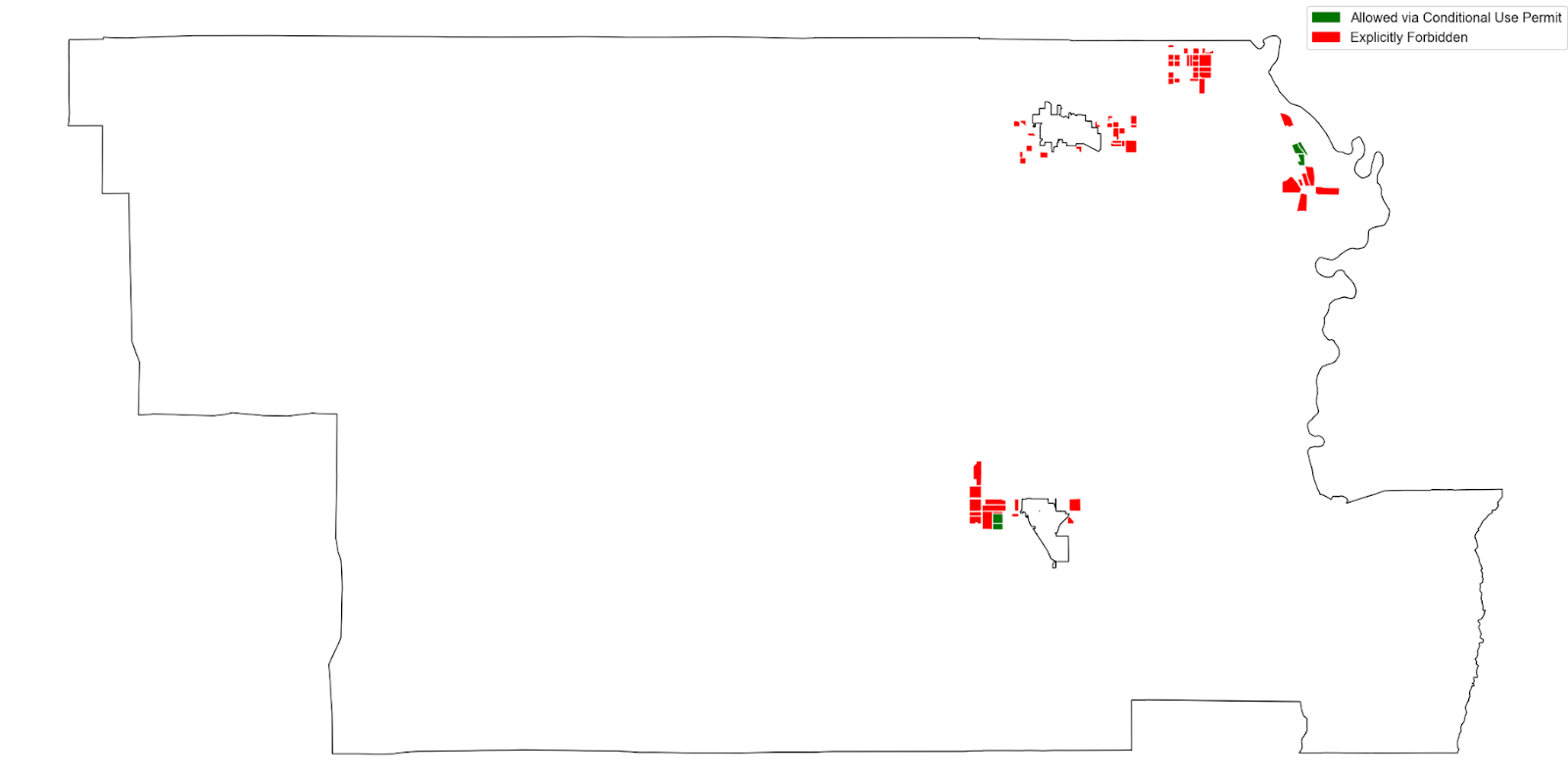
Only 5 parcels (green) in the entirety of Glenn County are feasible for ground-mount solar when considering interconnection, environmental constraints, and permitting restrictions.
Why are only 295 acres across 5 properties feasible for community solar in an entire county consisting of 1,327 square miles? As shown in the image below, the pockets of viable hosting capacity on the East of the county largely conflict with what has been zoned for solar in the West – as does the distribution of flat, cleared land where building ground-mount solar is financially viable.
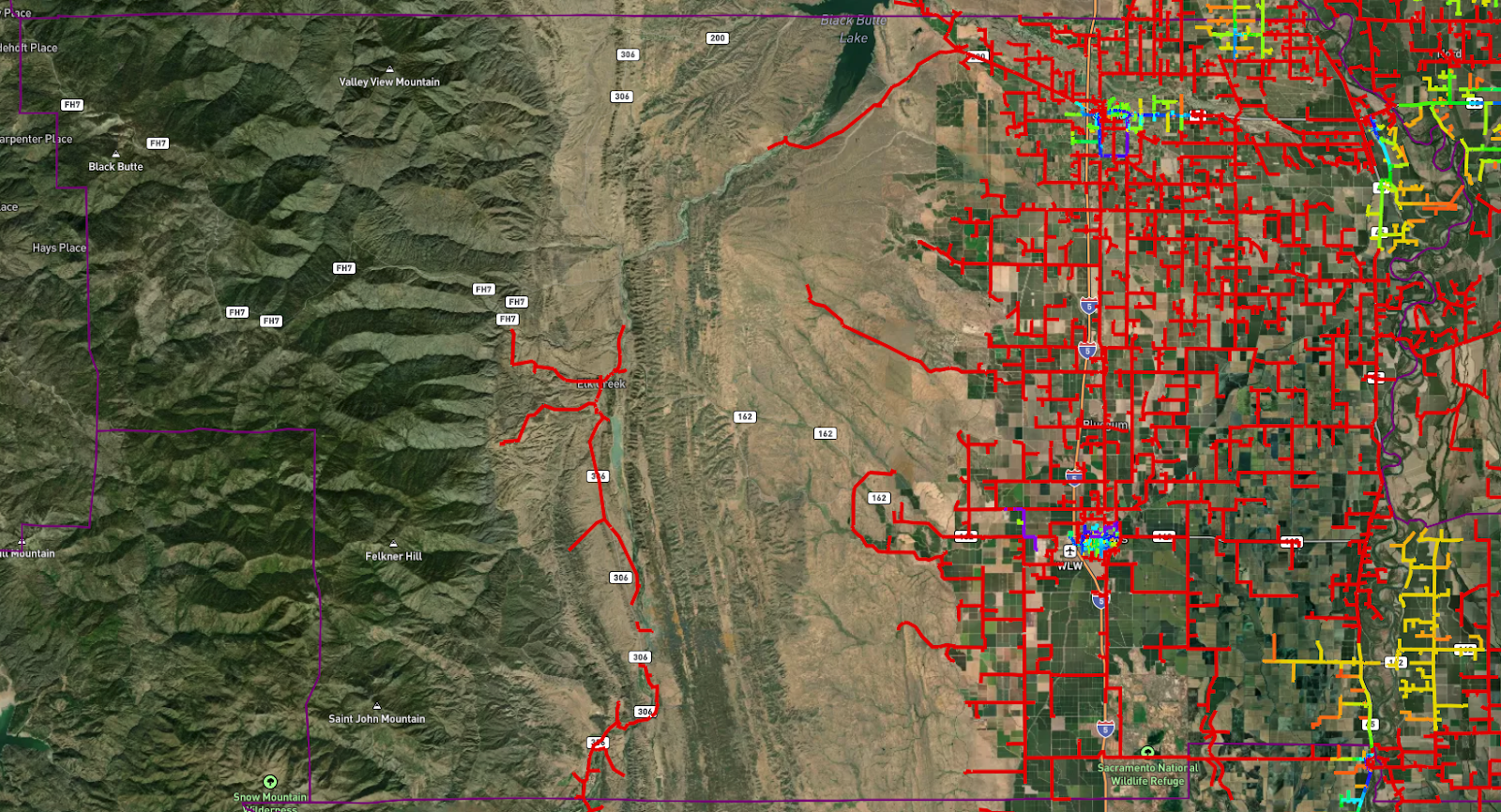
Distribution lines color-coded by available hosting capacity (where green = more capacity) overlaid with satellite imagery.
Glenn is just one of many counties in California and may fall on the more prohibitive end of the solar siting spectrum as each jurisdiction will bring their own unique opportunities and challenges. Nevertheless, it illustrates the growing tension between farming crops and farming electrons. The communities and developers willing to work together to scope designated electrical corridors for power plants, embrace agrivoltaics to make dual use of land, and relax restrictions on farmland at risk from escalating groundwater restrictions will be best positioned to lead the next wave of solar power growth in California.
Sign up for emails
Find the right sites faster, assess feasibility with world class data, and track progress across your entire project pipeline with software built to compress your workflow.
More articles

Three predictions for power development in 2026

Three predictions for power development in 2026


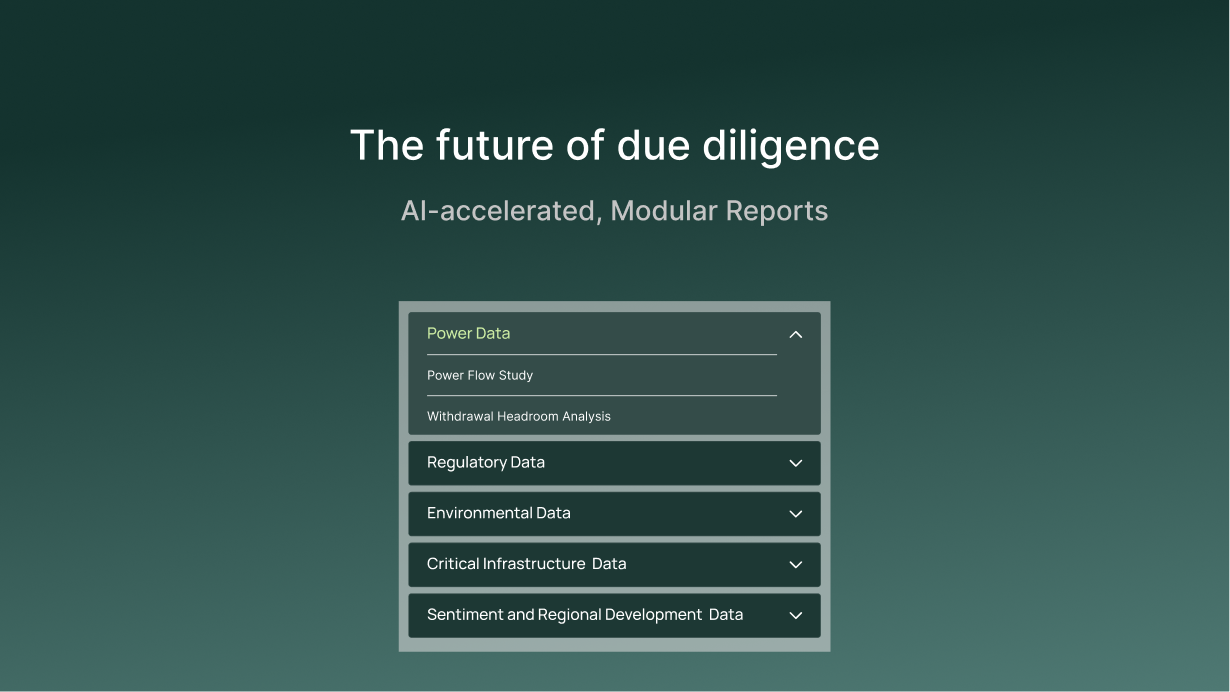
The future of due diligence: AI-accelerated, Modular Reports

The future of due diligence: AI-accelerated, Modular Reports



Faster development starts with better intelligence: Inside Paces Automated Reports

Faster development starts with better intelligence: Inside Paces Automated Reports



Beyond the headlines: What DOE's FERC directive really means for your project

Beyond the headlines: What DOE's FERC directive really means for your project



The One-Person, Billion-Dollar Power Development Company

The One-Person, Billion-Dollar Power Development Company


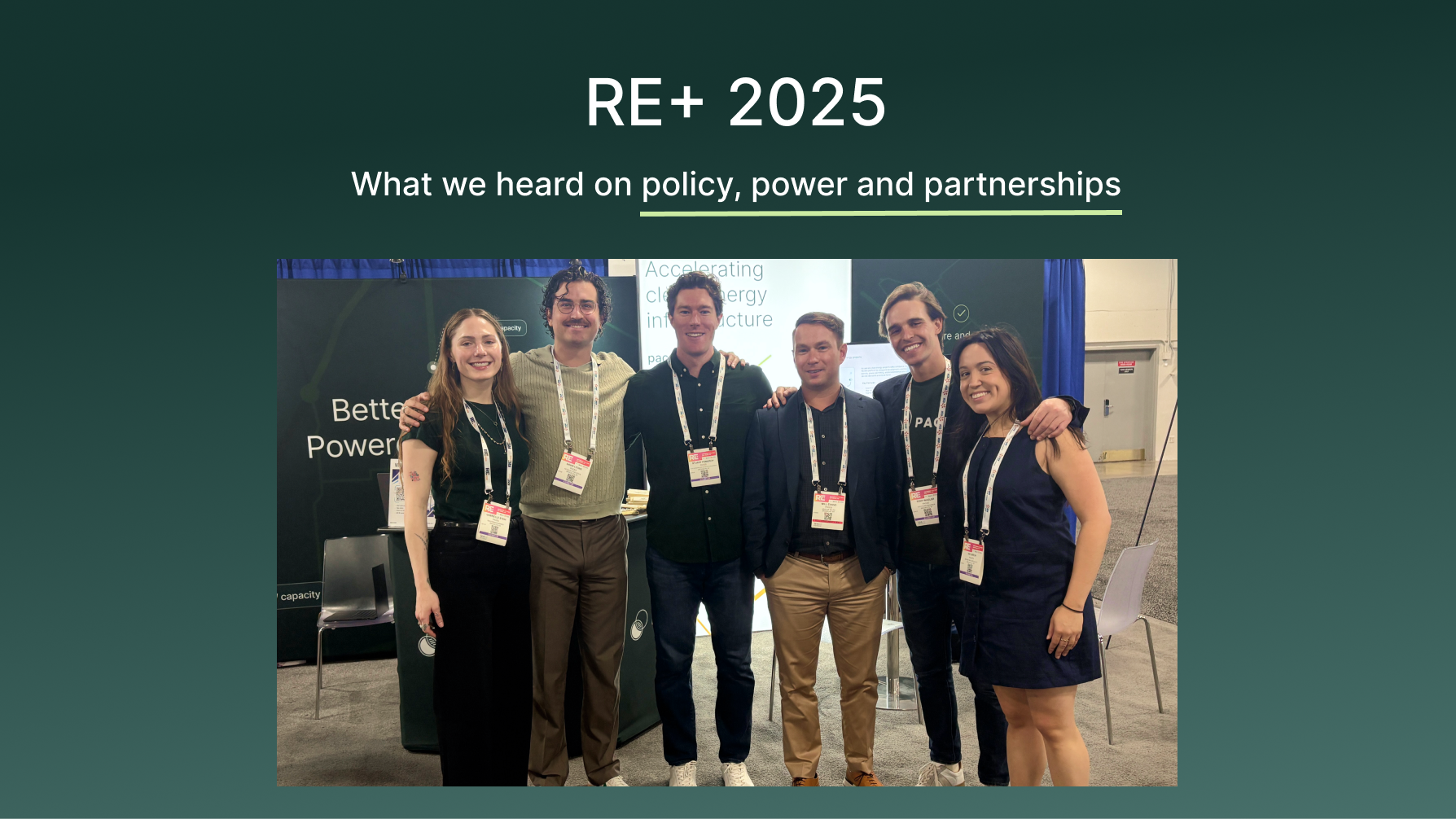
RE+ 2025: What we heard on policy, power, and partnerships

RE+ 2025: What we heard on policy, power, and partnerships



Do Not Wait and See: A 30-Month Sprint Playbook after OBBBA

Do Not Wait and See: A 30-Month Sprint Playbook after OBBBA


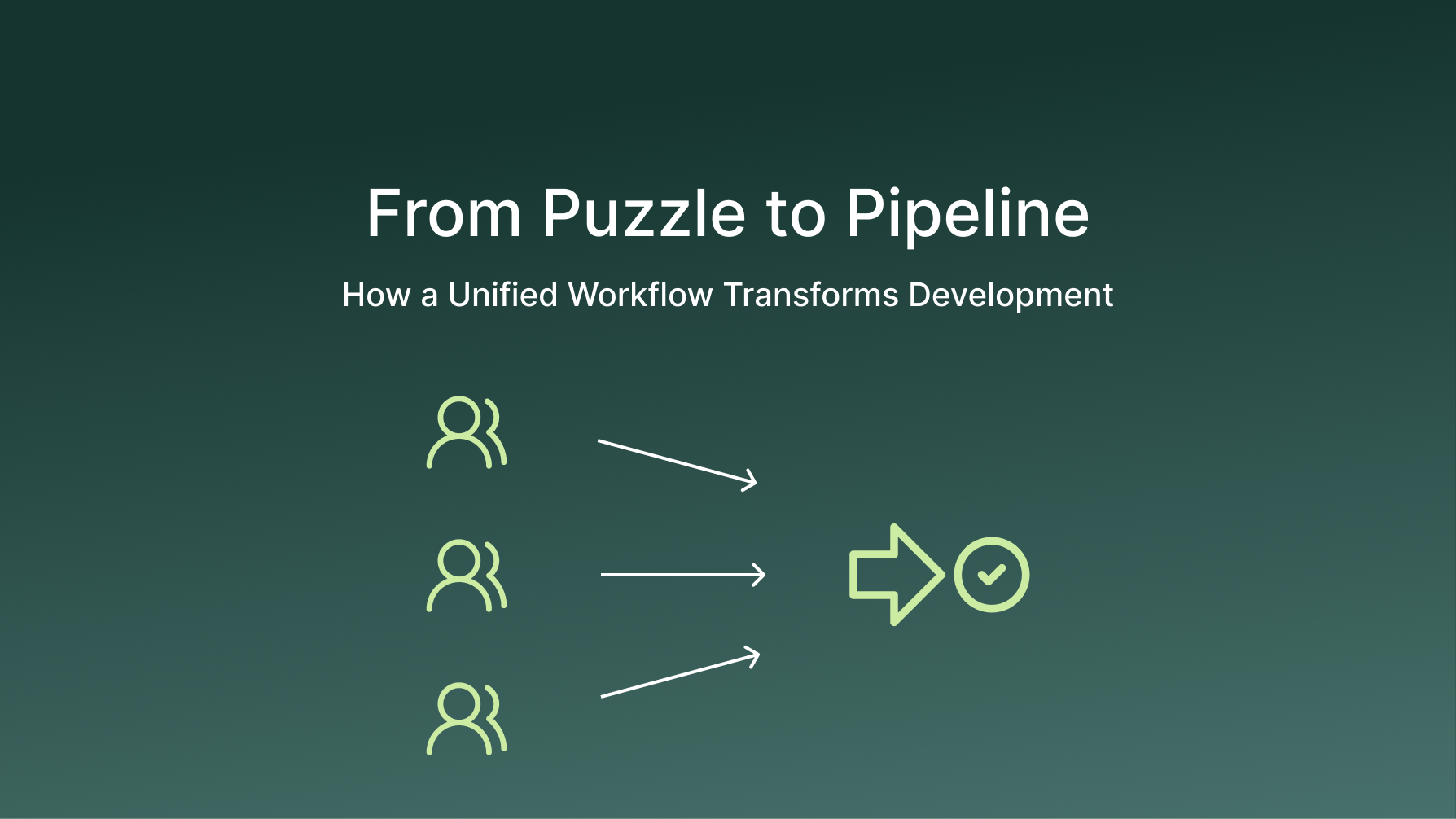
From puzzle to pipeline: how a unified workflow transforms development

From puzzle to pipeline: how a unified workflow transforms development


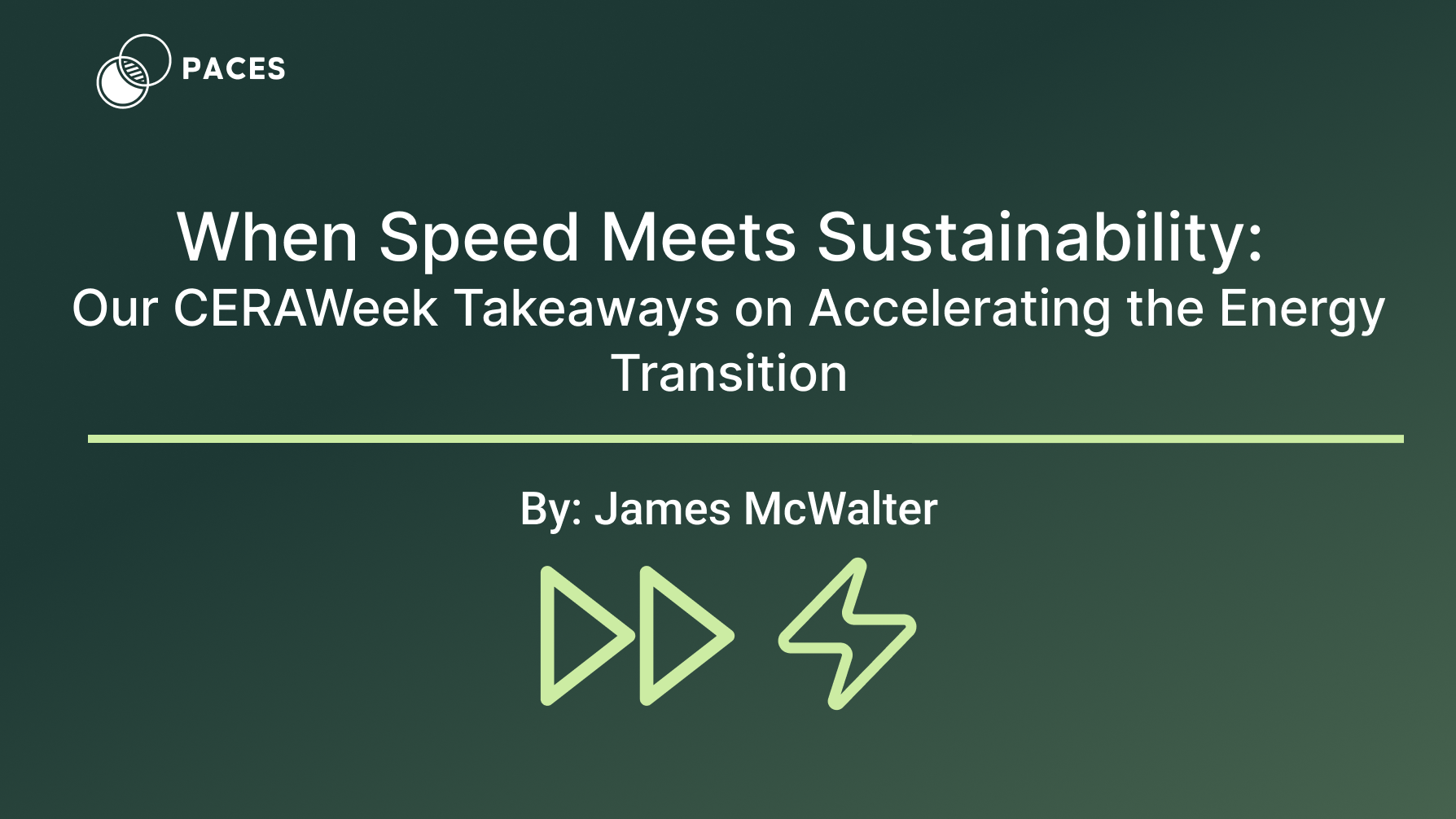
When Speed Meets Sustainability: Our CERAWeek Takeaways on Accelerating the Energy Transition

When Speed Meets Sustainability: Our CERAWeek Takeaways on Accelerating the Energy Transition



Introducing the Accelerated Development Framework

Introducing the Accelerated Development Framework



A Look Back and the Road Ahead for 2025

A Look Back and the Road Ahead for 2025



The Critical Role of Clean Energy in the AI Revolution

The Critical Role of Clean Energy in the AI Revolution


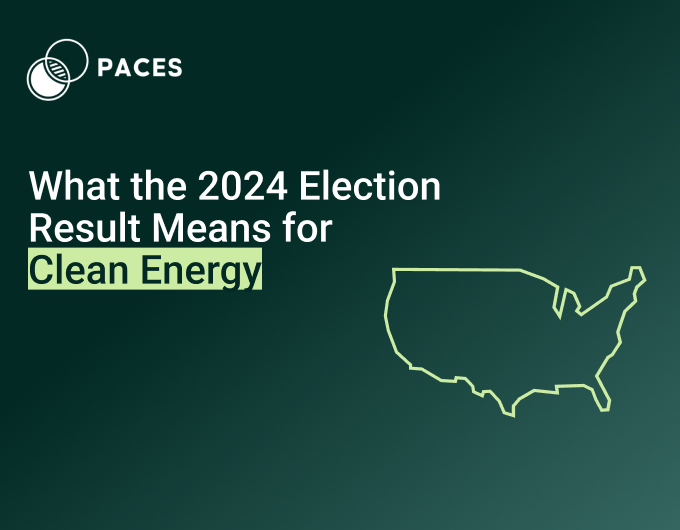
Paces's Take: What the 2024 Election Result Means for Clean Energy

Paces's Take: What the 2024 Election Result Means for Clean Energy


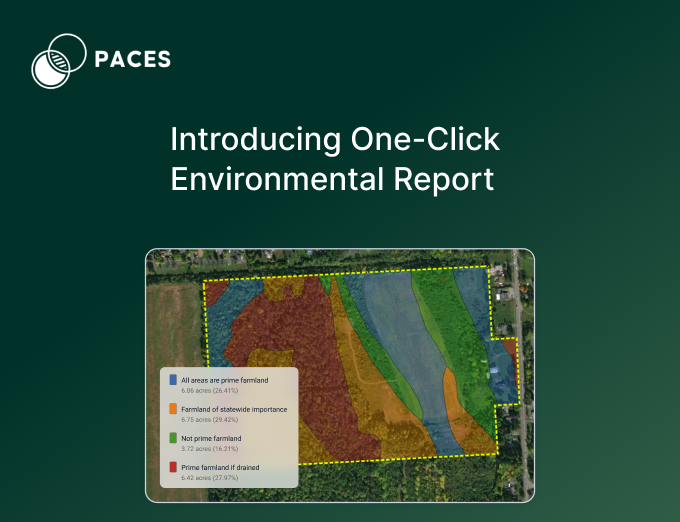
Why We Built the Environmental Reports: Saving Time, Reducing Effort, and Empowering Teams

Why We Built the Environmental Reports: Saving Time, Reducing Effort, and Empowering Teams



Solar Energy Adoption in NY vs. PA

Solar Energy Adoption in NY vs. PA



Siting the Needle in a Haystack: Solar Permitting in Glenn County, CA

Siting the Needle in a Haystack: Solar Permitting in Glenn County, CA


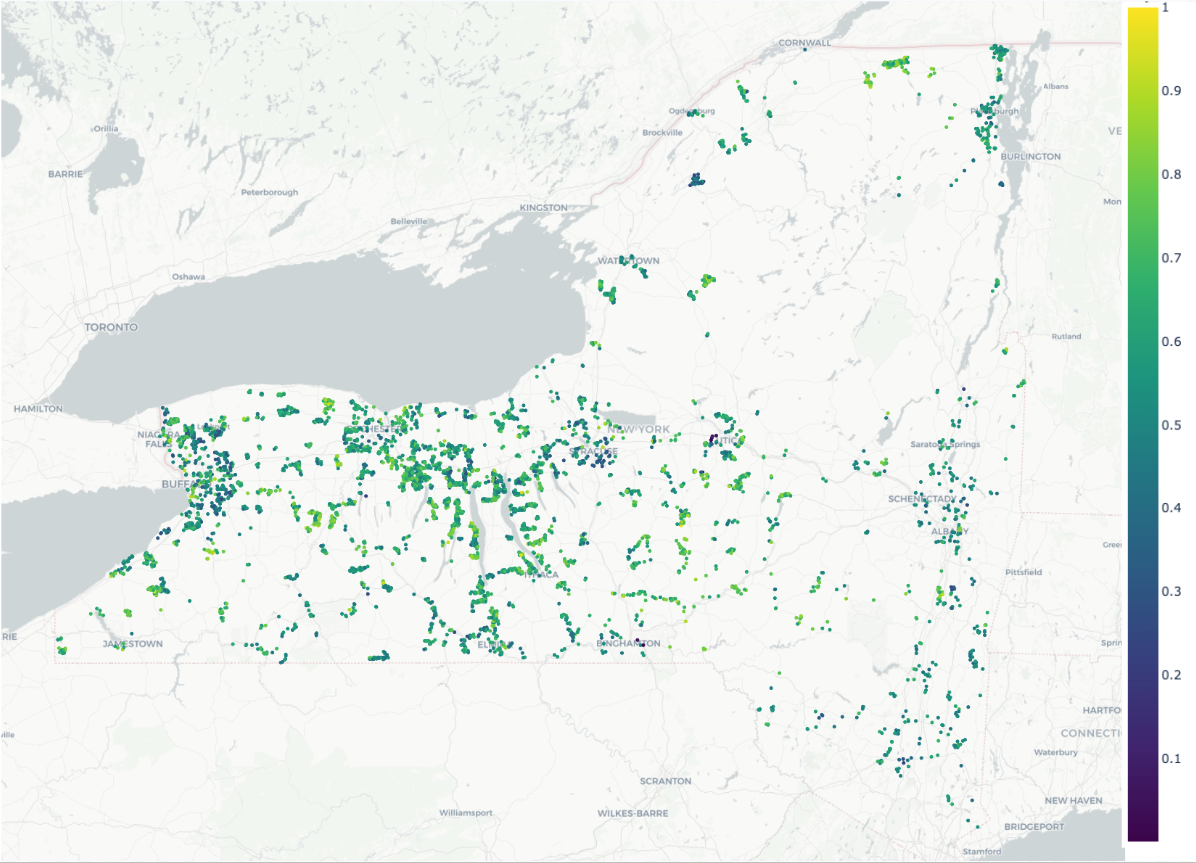
10 GW by 2030: Sizing the New York Community Solar Market from the Local Ordinance Up

10 GW by 2030: Sizing the New York Community Solar Market from the Local Ordinance Up



Quantifying Solar Permitting Risk with Large Language Models

Quantifying Solar Permitting Risk with Large Language Models


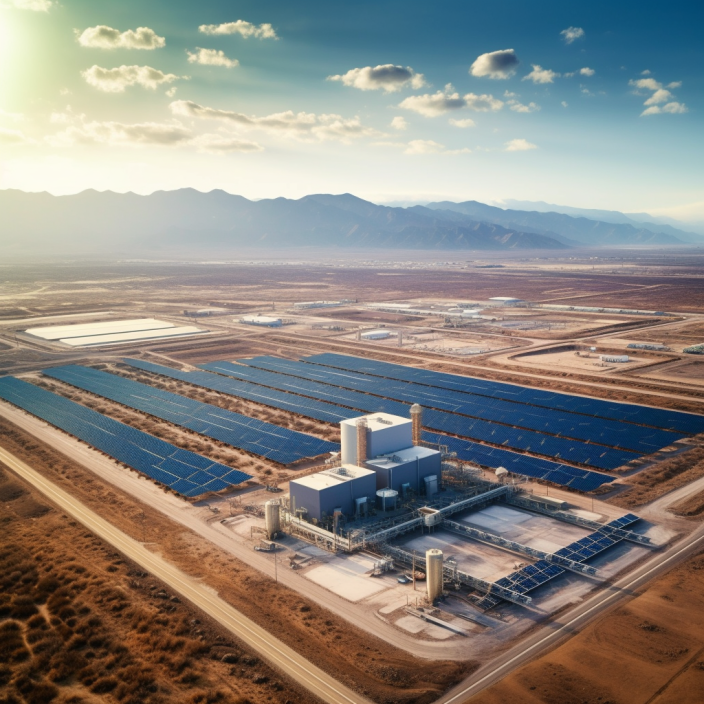
From Brownfields to Brightfields

From Brownfields to Brightfields



From Sheep Farms to Solar Farms

From Sheep Farms to Solar Farms


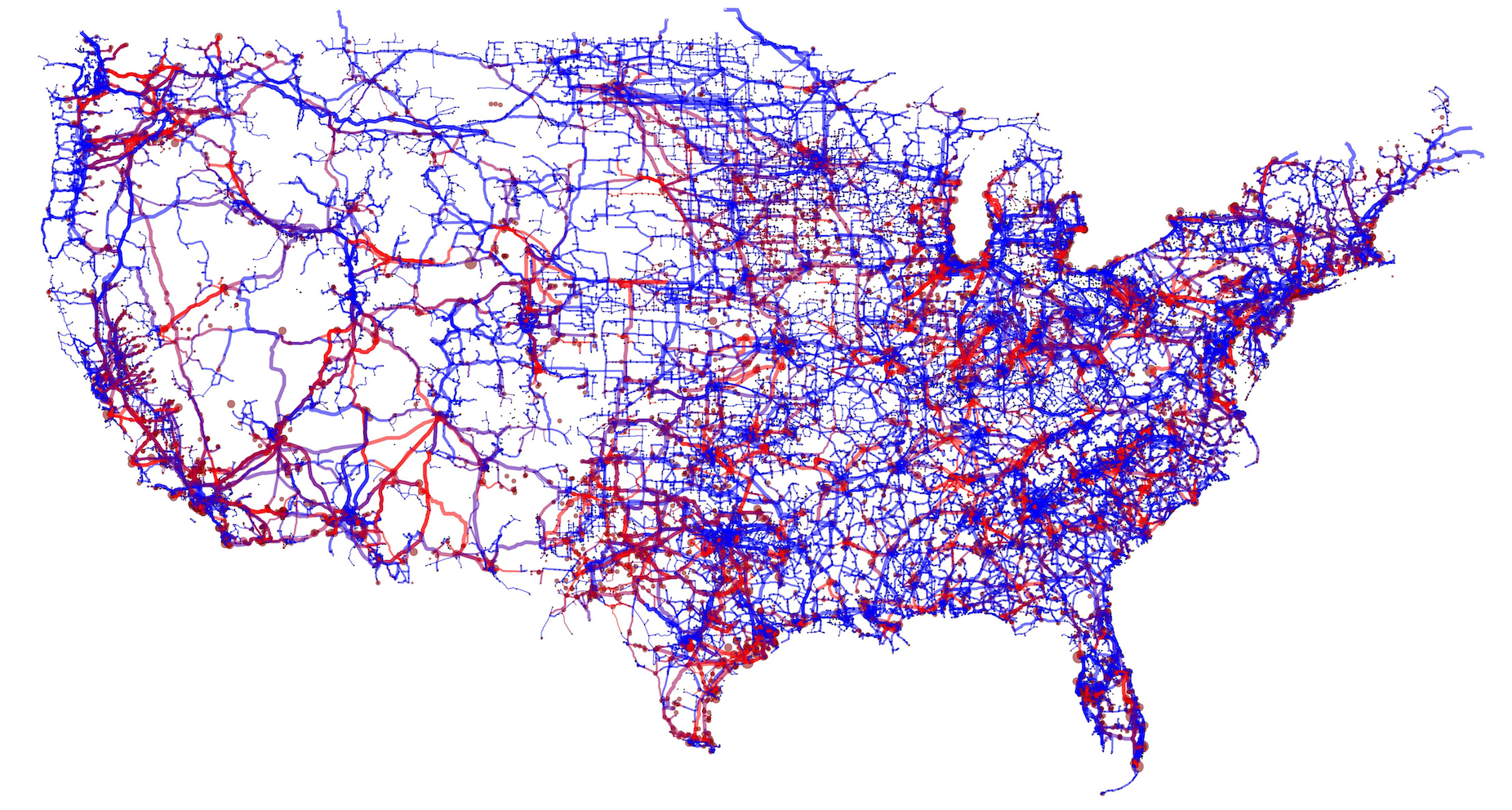
Evolution at the Edge: Renewables and the Spatial Configuration of the Grid

Evolution at the Edge: Renewables and the Spatial Configuration of the Grid



Renewable Development Blockers

Renewable Development Blockers



Cofounder Charles Bai is a Forbes 30 Under 30!

Cofounder Charles Bai is a Forbes 30 Under 30!


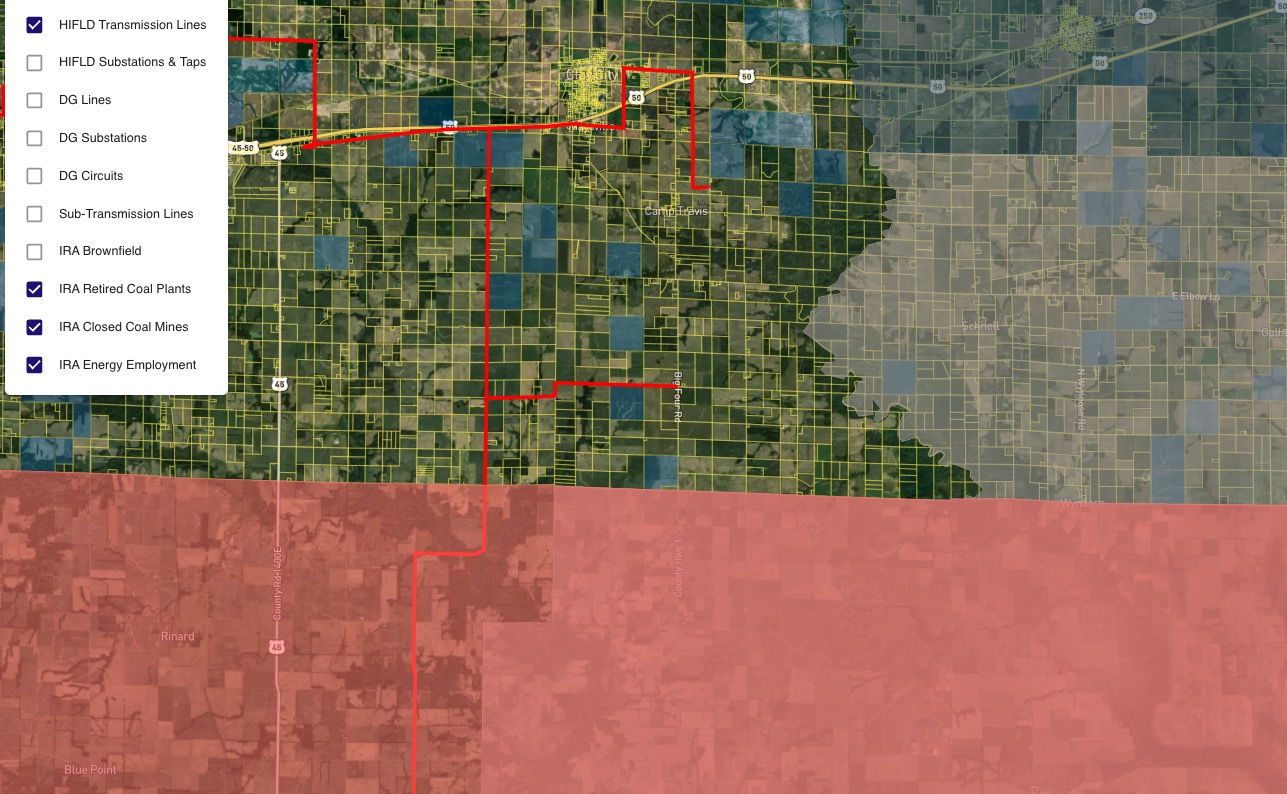
Inflation Reduction Act: Energy Community

Inflation Reduction Act: Energy Community


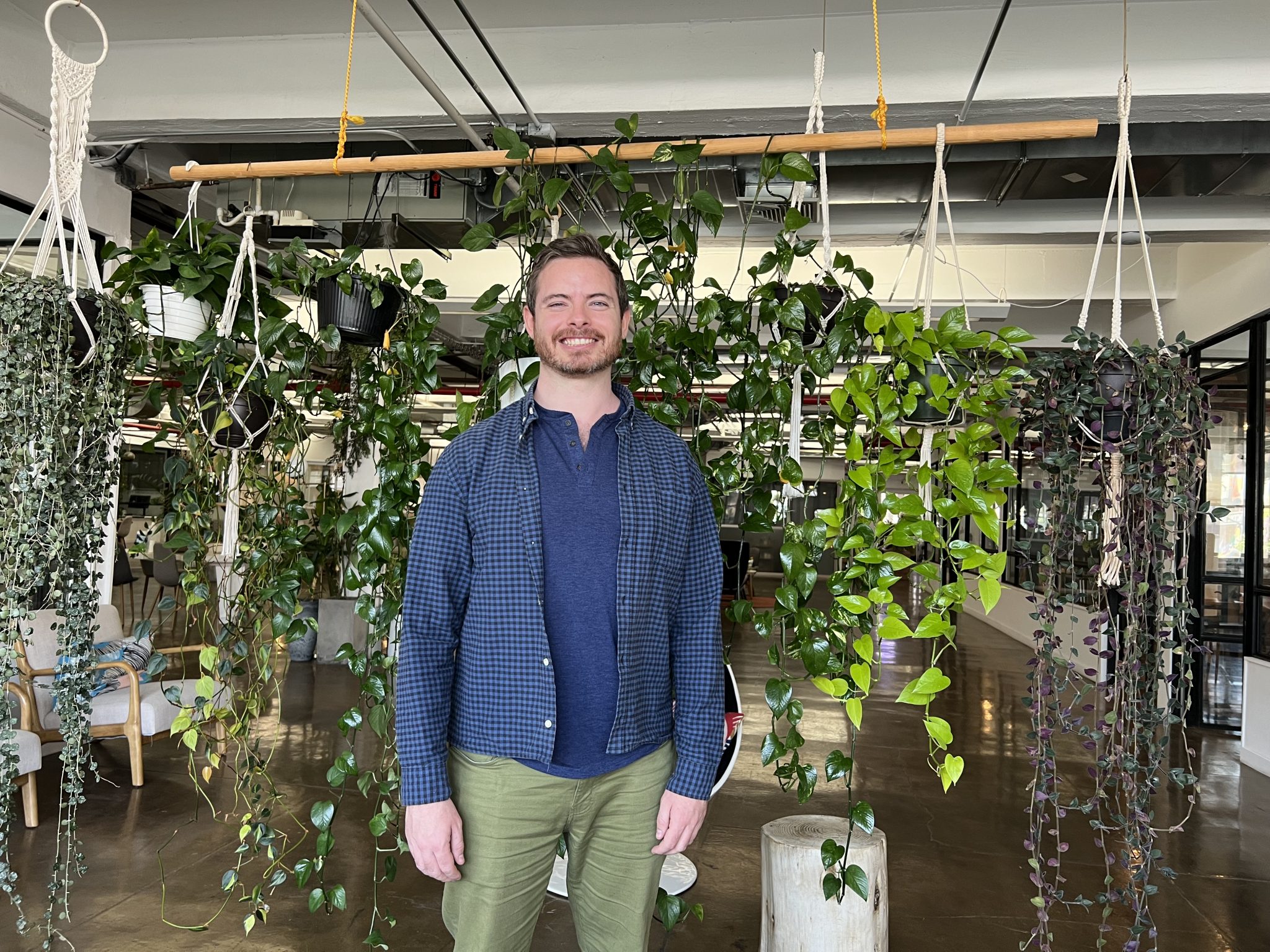
Paces Featured on Founder to Founder!

Paces Featured on Founder to Founder!



Paces @ TechCrunch Climate 2022

Paces @ TechCrunch Climate 2022



Paces Joins Y Combinator Summer Batch 2022

Paces Joins Y Combinator Summer Batch 2022



Paces Featured in Forbes!

Paces Featured in Forbes!



Paces Launch Podcast

Paces Launch Podcast


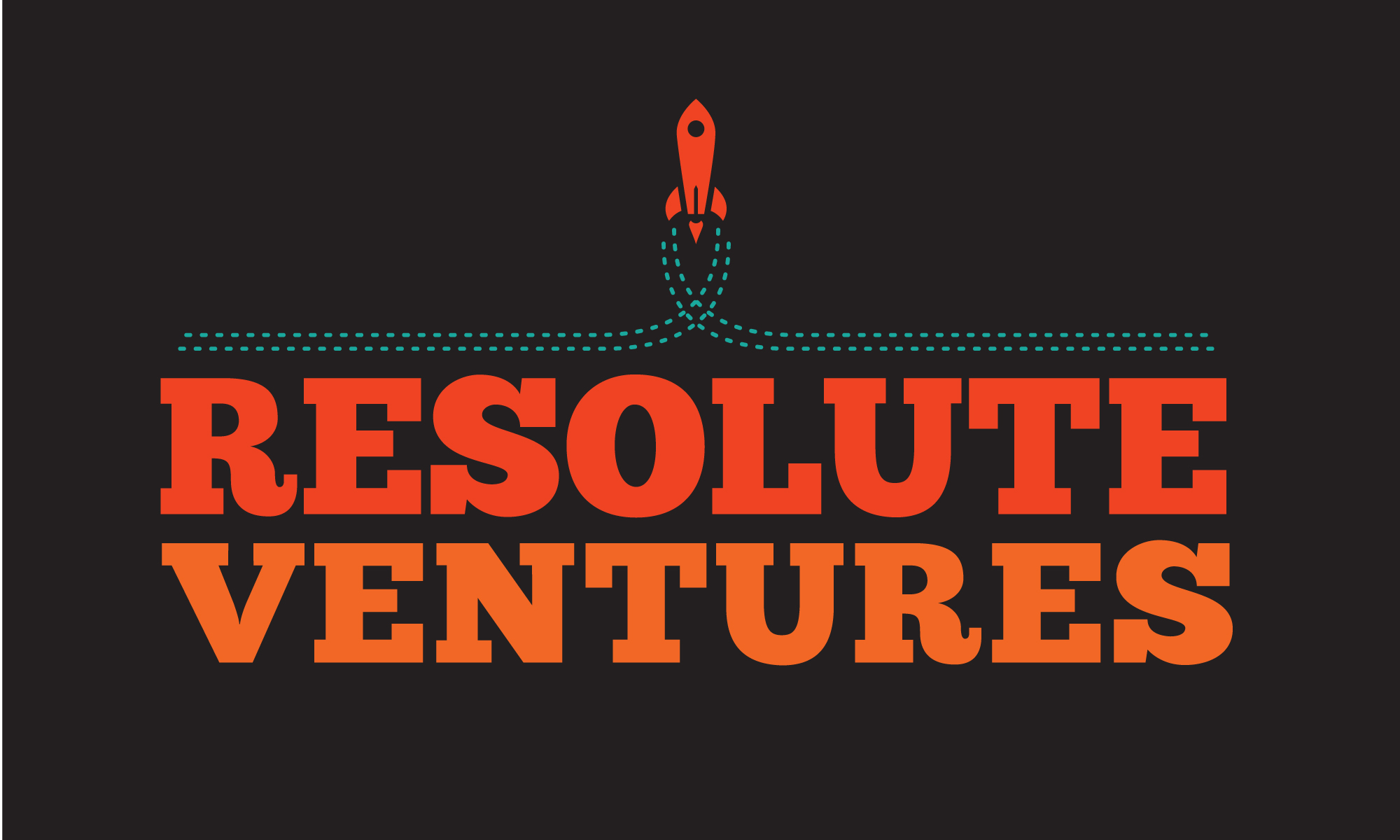
Green Infrastructure Data Platform Paces raises $1.9M Pre-Seed led by Resolute Ventures

Green Infrastructure Data Platform Paces raises $1.9M Pre-Seed led by Resolute Ventures


Sign up for emails
Find the right sites faster, assess feasibility with world class data, and track progress across your entire project pipeline with software built to compress your workflow.

